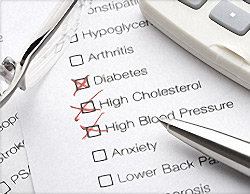Skip To Content
FOOD: Eat Better
Food Groups
- Fruits & Vegetables
- GMOs & Organics?
- Benefits of Grains
- What's a Carb?
- Low Carb Substitutes
- Proteins: Building Blocks
- Protein-Packed Breakfasts
- Meats: Keep it Lean
- Dairy Health Benefits
- Importance of Vitamin D
- Artificial Sweeteners
- Eating a Healthy Diet
- Fiber Sources & Benefits
- How Much Water?
- Example 2 Day Meal Plan
- Mediterranean Diet Pyramid
- Nutrition Facts Label
- Vitamins & Minerals
- U.S. Dietary Guidelines
diabetes nutrition
 |
The American Diabetes Association, ADA, recommends that people who need to monitor their blood sugar focus on the nutrient density of the food. Nutrient density identifies foods that, calorie for calorie, provide an excellent array of nutrients. When looking at a food label, the ADA has these tips: |
Learn more about taking charge of your Diabetes |
|
H‑E‑B Health Care Services Notice of Privacy Practice | Texas State Board of Pharmacy | How to Dispose of Unused Medicines